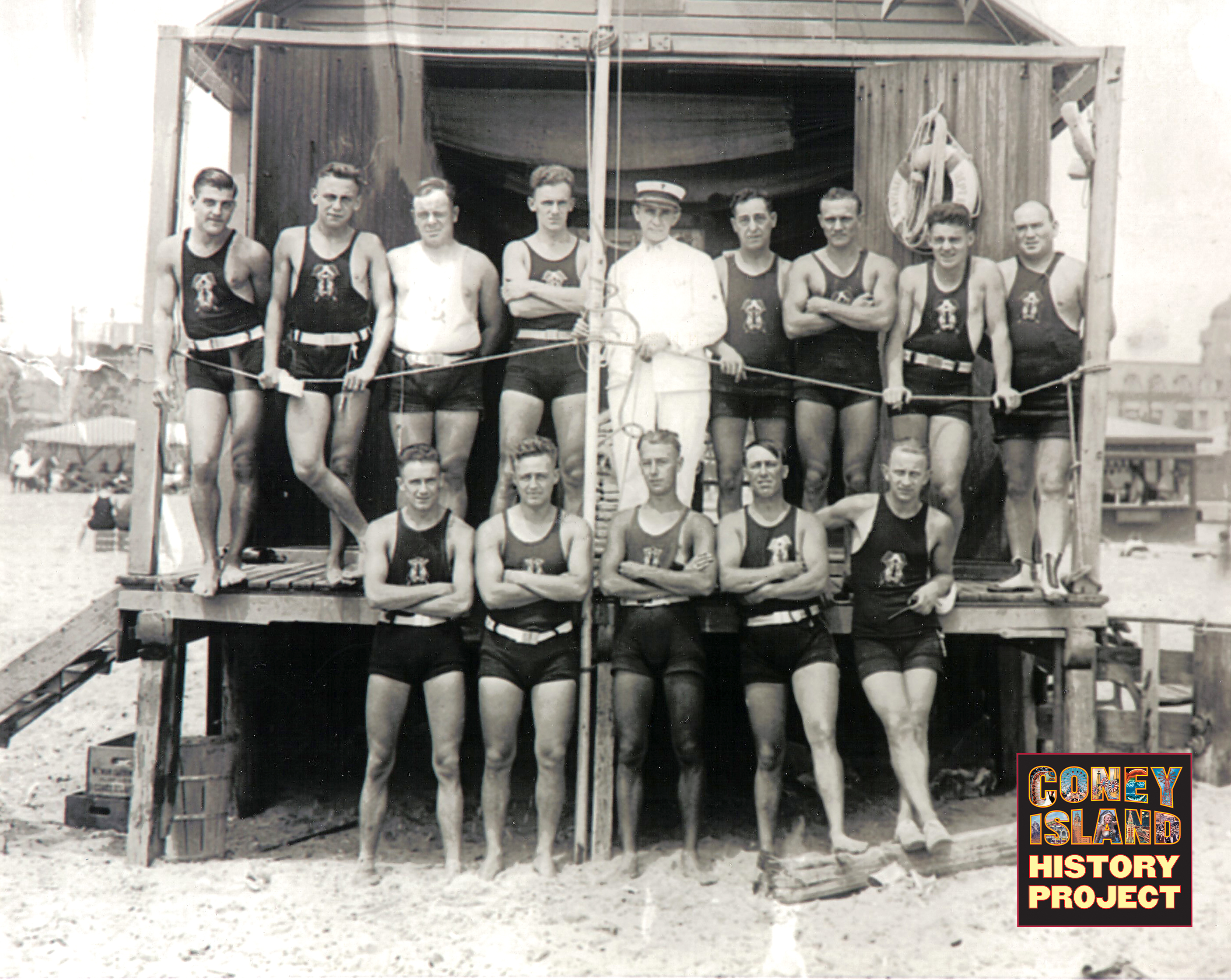 U.S. Volunteer Life Saving Corps lifeguards at their headquarters on the beach at West Fifth Street, Coney Island, c.1919.
U.S. Volunteer Life Saving Corps lifeguards at their headquarters on the beach at West Fifth Street, Coney Island, c.1919.
The current lifeguard shortage in New York City brings to mind the history of lifeguards at Coney Island and the essential role that they play in public safety.
When ocean bathing gained popularity at the end of the 19th century, waves of New Yorkers began heading for Coney Island to seek relief from sweltering tenements. Few of them knew how to swim. The beach at that time was private property and there were no city lifeguards to protect swimmers.
Safety was provided by bathhouse owners who hired private lifeguards that for the most part were untrained and ineffective. There were no standards. Bathhouses hired men who worked cheap and “looked the part.” Former boxers, longshoremen, and weightlifters fit the bill. These unqualified guardians used primitive methods for resuscitation, such as “barrel-rolling,” (rolling a drowning victim over a barrel on its side to remove water from the lungs), a technique that caused more harm than good. Many private guards were drinkers and poor swimmers.
The United States Volunteer Life Saving Corps soon came to the rescue. Founded in 1872, the service established rescue stations all along New York City’s rivers and shorelines. Coney Island’s Volunteer Service life saving station was headquartered in a sturdily built wood-frame boathouse located on the beach at West Fifth Street.
At first the volunteers were met with hostility by the bathhouse lifeguards who saw them as competition and a threat to their jobs. They were finally accepted as swelling beach crowds made it obvious that private guards could no longer monitor the safety of hundreds of thousands of swimmers.
Many of the volunteers were WW I Navy veterans: competent, battle tested, and trained to rescue panicky drowning victims, shipwreck survivors, and even horses. They were also champion long-distance swimmers who participated in local contests. Thousands of Coney Island rescues were carefully documented by hand in logs, with the names, dates, and locations of all incidents.
Ruth Hroncich’s grandfather, Ernest Gross, was a volunteer with the Service from 1919 to 1921, before the Coney Island beach became public. Ruth recently donated her grandparent’s photos to the Coney Island History Project. Ernest Gross lived on Neptune Avenue and met his wife, Ruth Atkinson in 1920 at Weber’s Baths in the West End. They were married in 1925. These family photos document the last days of the Volunteers before the Boardwalk was built and City lifeguards took over safety operations.
– Charles Denson
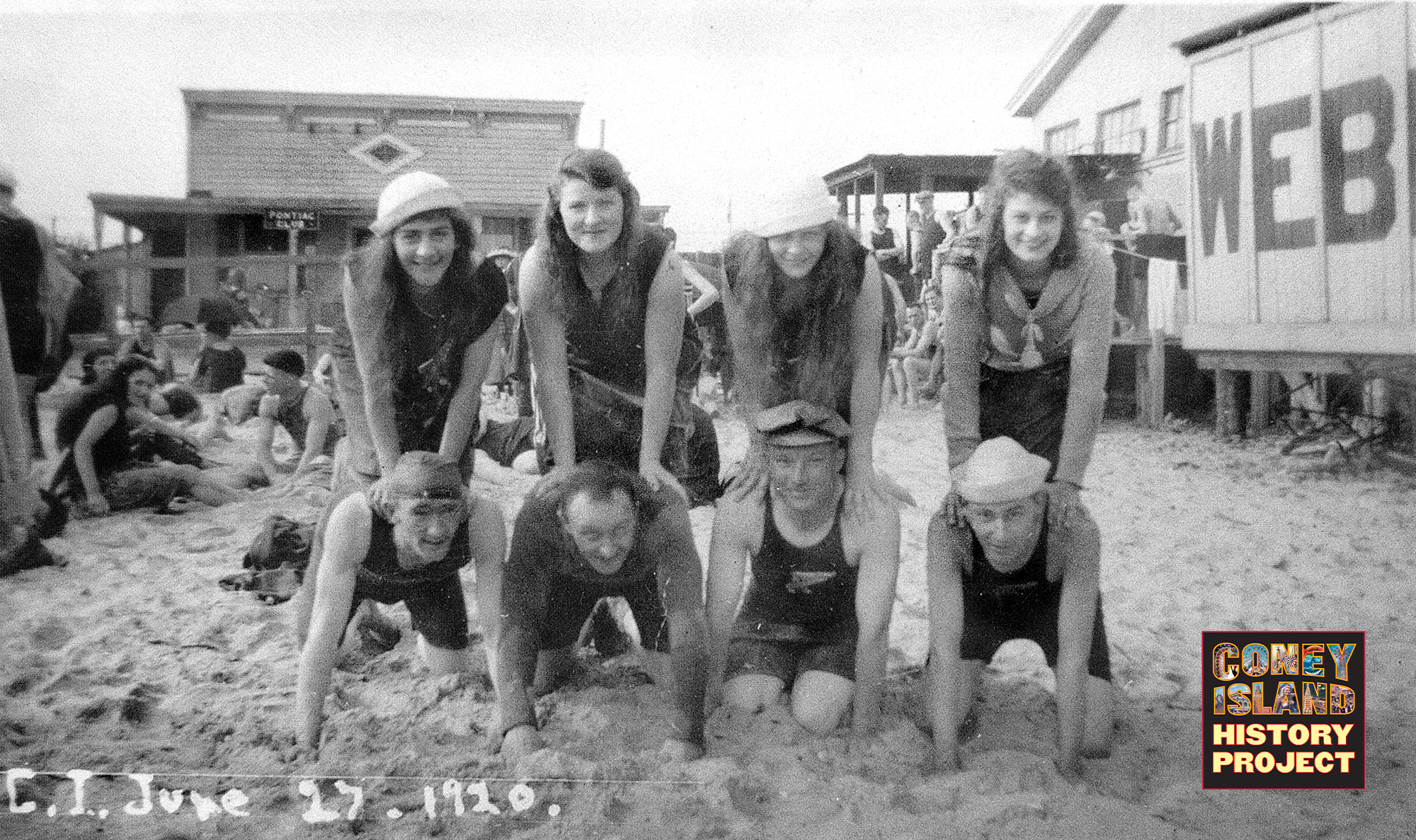
Ernest and Ruth Gross, the couple third from left, at Weber's Baths, 1920.
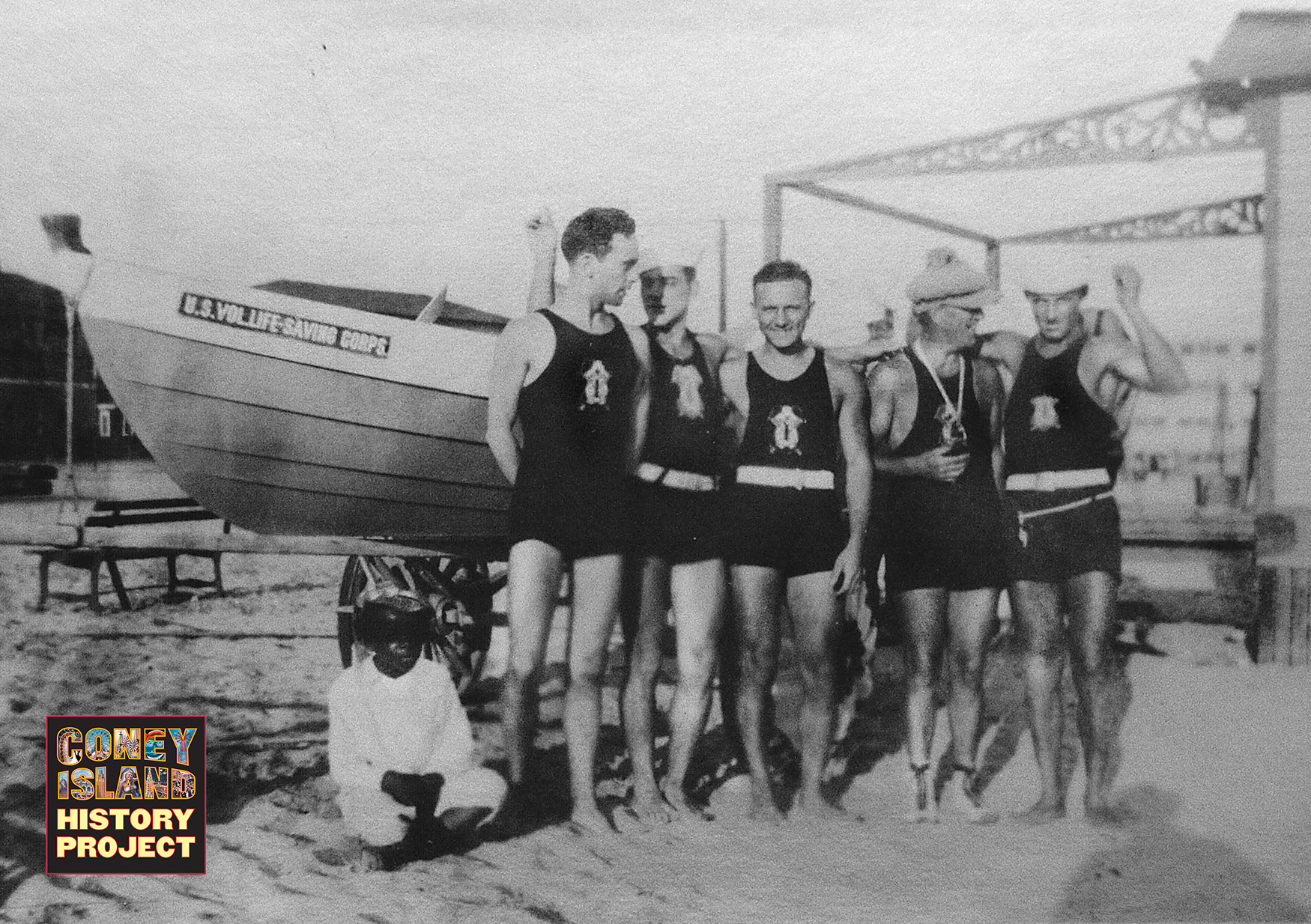
Navy veteran Ernest Gross is third from left in this picture. The lifeguards would take the surf boat out every day and practice launching through the waves.
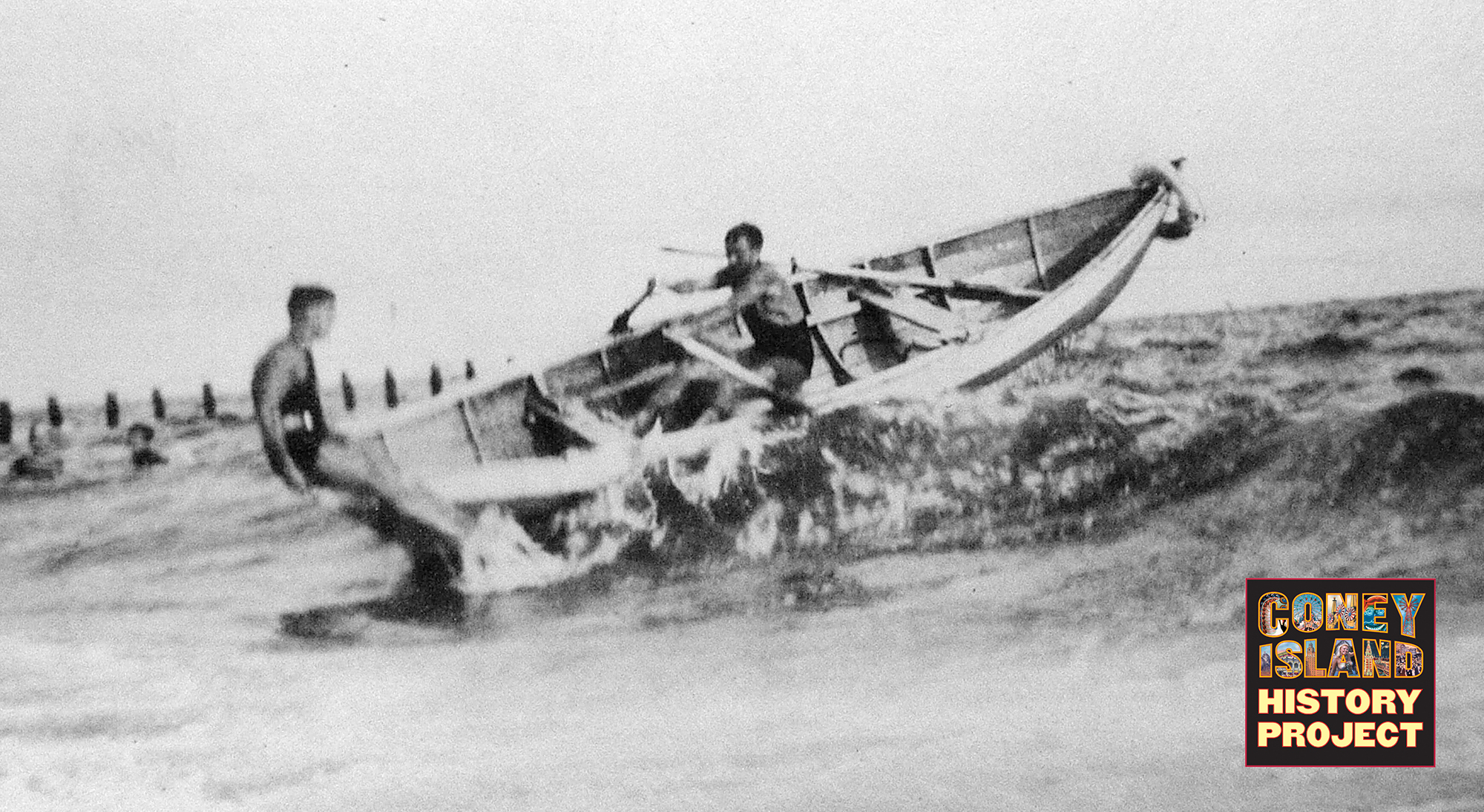
Volunteer lifeguard surf boat in action at Coney Island.
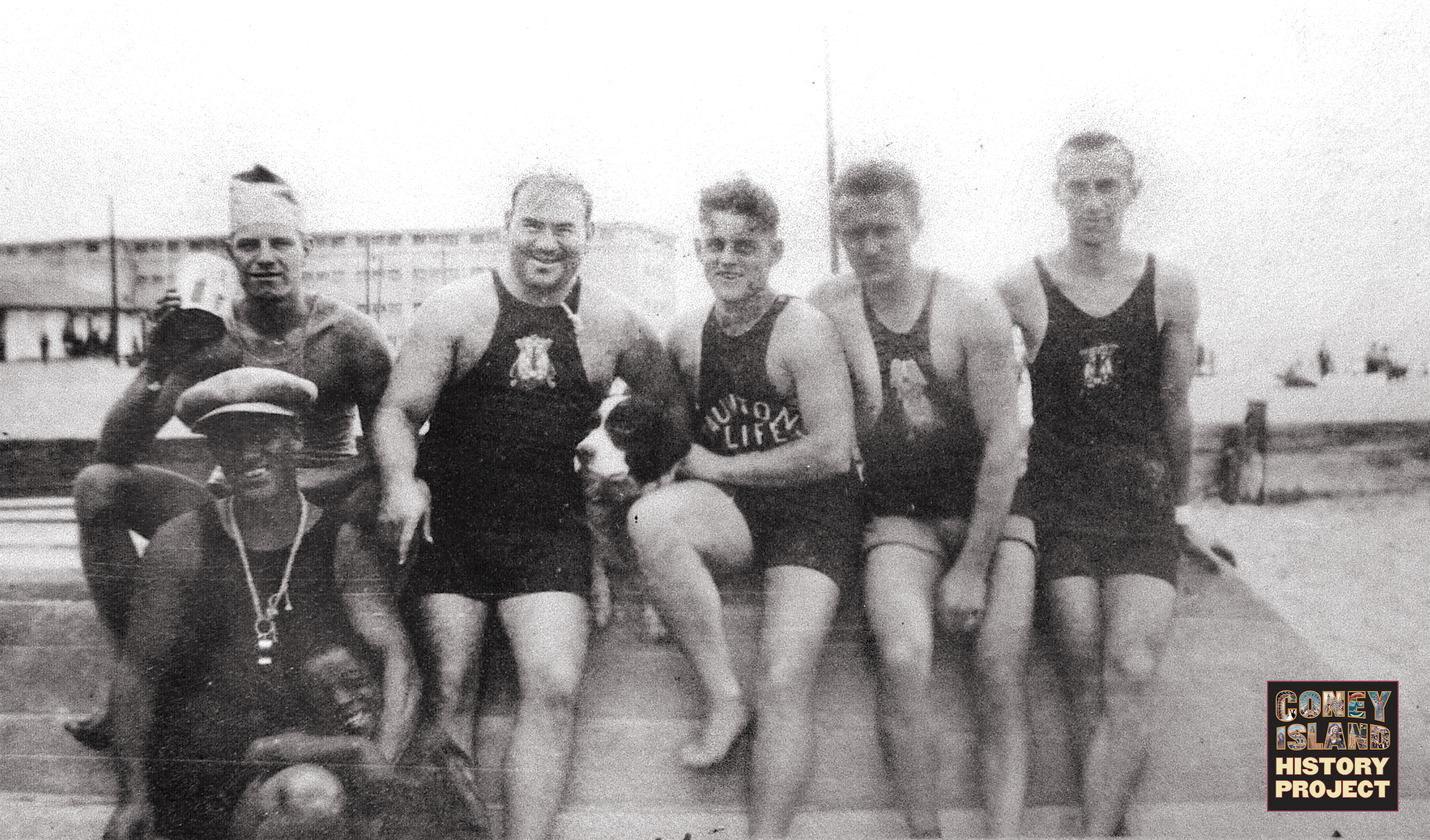 Volunteer lifeguards on the Coney Island Beach, 1920. Ernest Gross is second from right. (Dog at center was not a lifeguard.) The Municipal Bathhouse can be seen behind them.
Volunteer lifeguards on the Coney Island Beach, 1920. Ernest Gross is second from right. (Dog at center was not a lifeguard.) The Municipal Bathhouse can be seen behind them. 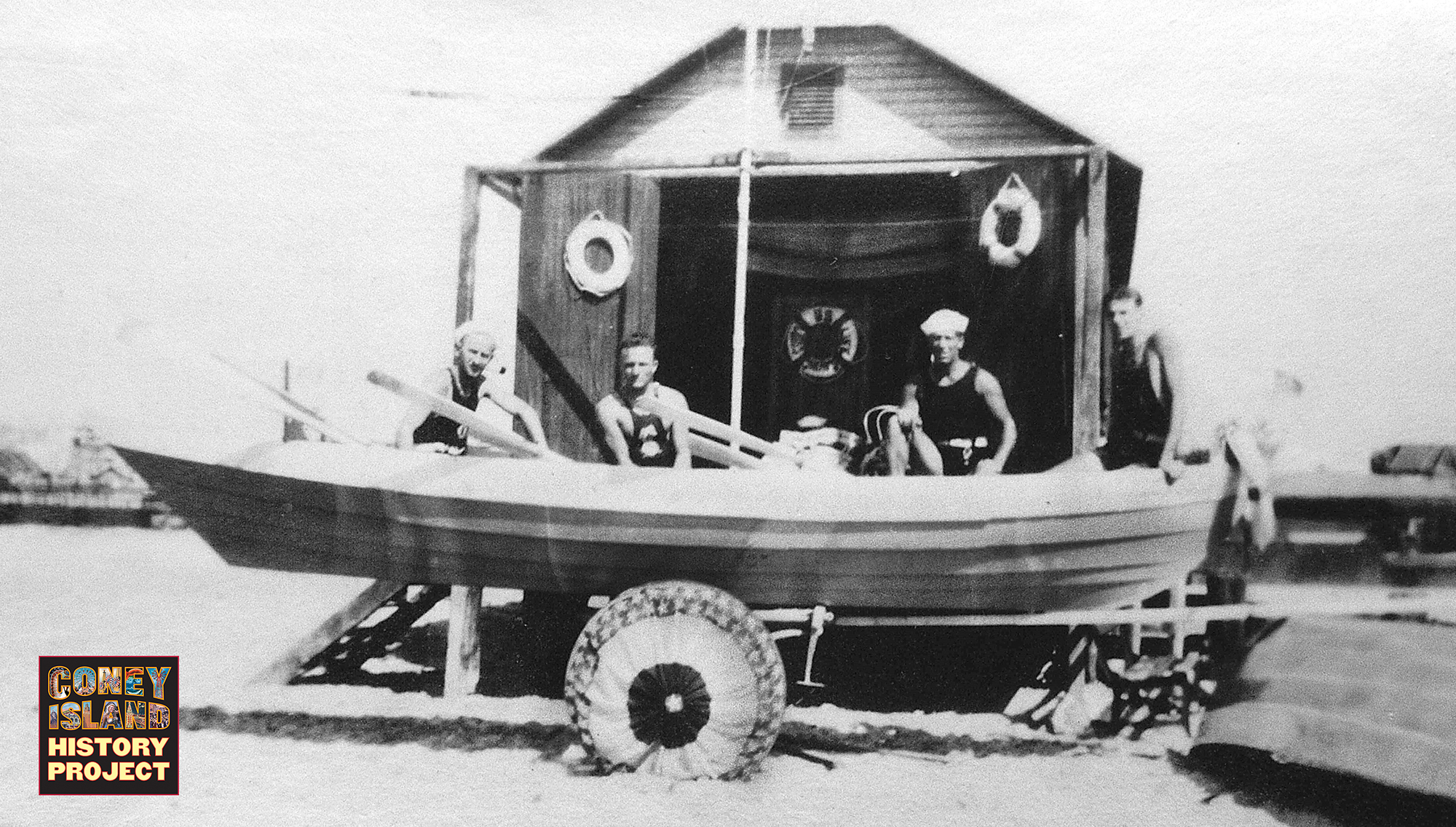 Lifeguards at the Coney Island boathouse.
Lifeguards at the Coney Island boathouse.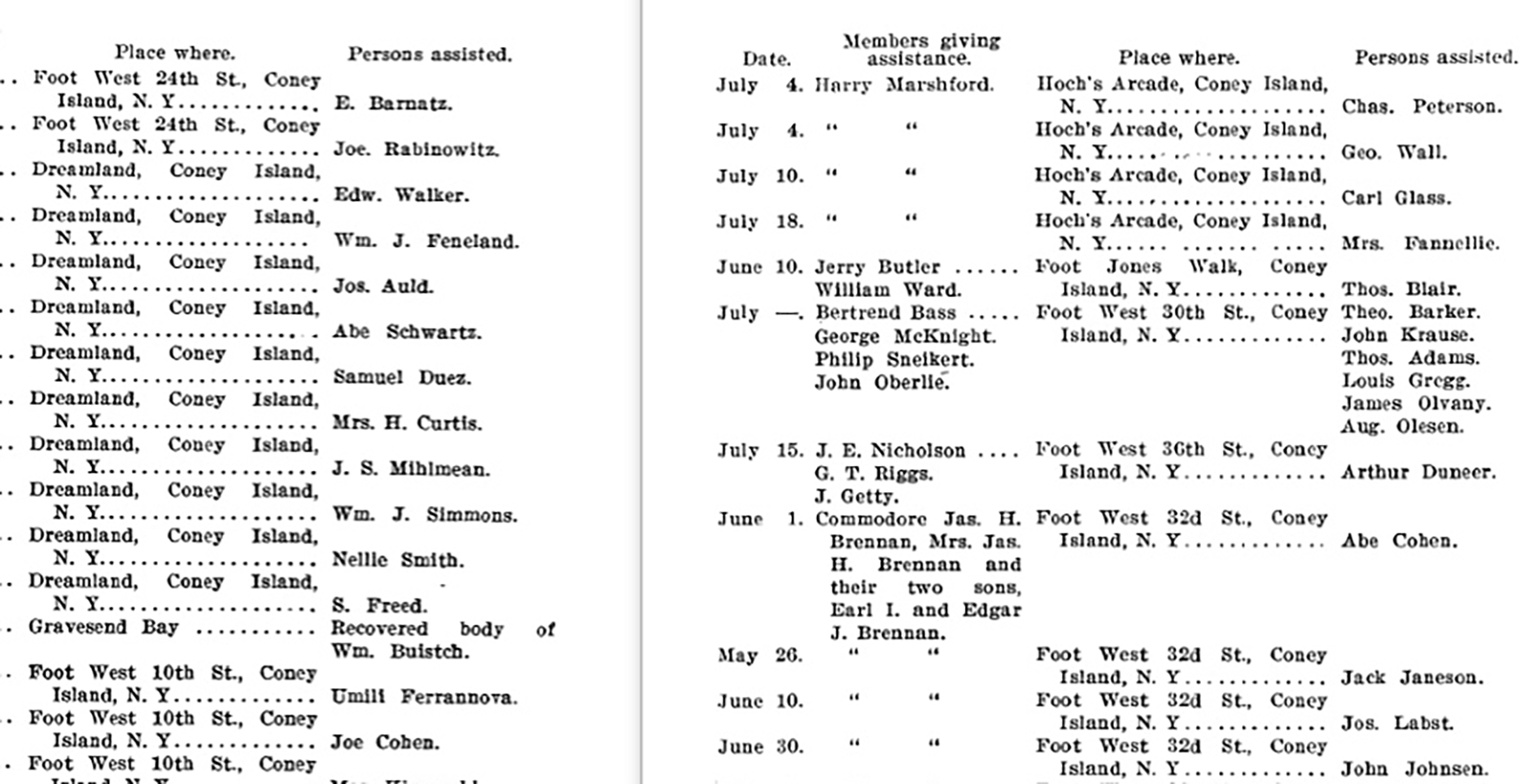
A page from the 1909 Volunteer log details rescues at locations ranging from Dreamland to West 32nd Street.

Add new comment